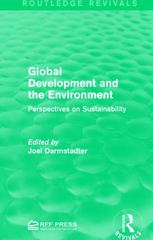Please answer only questions 34 to 51
PART 4 In Wthere are seven supermarkets. 0 Past research has shown that out of 100 typical customers: 0 5 are shopping at store 1 o 20 at store 2 o 5 at store 3 e 25 at store 4 o 15 at store 5 o 10 at store 6 o 20 at store 7 . Stores 1, 4 and 6 are Safeway stores. 0 Stores 2, 3, 5 and 7 are Whole Foods stores. . Stores 2, 4 and 7 are located downtown. - Assume that one customer is chosen at random and that a customer only shops at one store. Outcome Etrefers to the random customer shopping at store g", Event S means that the customer shops at a Safeway store. Event W means that the customer shops at a Whole Foods store. Event D means that the customer shops at a store located downtown. Create a frequency table showing f; (the Absolute Frequencies) and the Relative Frequencies. Identify which outcomes correspond to which events by marking X in the appropriate boxes in the last three columns. Use this table to hel - ou answer the remainin_ uestions. ; fre- uenc 1 E1 IIIIIII IIIIIII 4 E4 IIIIIII 6 Es IIIIIII Total Hint: Remember that the f: values are Absolute Frequencies (counts) 19. What is f1? 20. What is f2? 21. What is f3? 22. What is f4? 23. What is fs? 24. What is f5? 25. What is f7? Hint: Remember that the Relative Frequencies will always be numbers between 0.00 and 1.00 (inclusive). 26. What is the Relative Frequency of Outcome E1? 27. What is the Relative Frequency of Outcome E2? 28. What is the Relative Frequency of Outcome E3? 29. What is the Relative Frequency of Outcome E4? 30. What is the Relative Frequency of Outcome E5? 31. What is the Relative Frequency of Outcome E5? 32. What is the Relative Frequency of Outcome E7? Hint: Remember that probabilities are also always numbers between 0.00 and 1.00 (inclusive). 34. Find P(S). 35. Find P(D). 36. Find P(W). 37. Which method was used to assign the probabilities? 38. Which outcomes correspond to D n W? 39. Explain in words the business meaning of D n W. Type your answer into Canvas. 40. Find P(D n W). 41. Which outcomes correspond to S U D? 42. Explain in words the business meaning of S U D. Type your answer into Canvas. 43. Find P(S U D). 44. Are events S and D mutually exclusive? 45. Are events S and W exhaustive? 46. Are events S and D exhaustive? 47. Which outcomes correspond to WC? 48. Explain in words the business meaning of WC. Type your answer into Canvas. 49. Find P(WC). 50. Are events S and W mutually exclusive? 51. What is the P(S n W)








